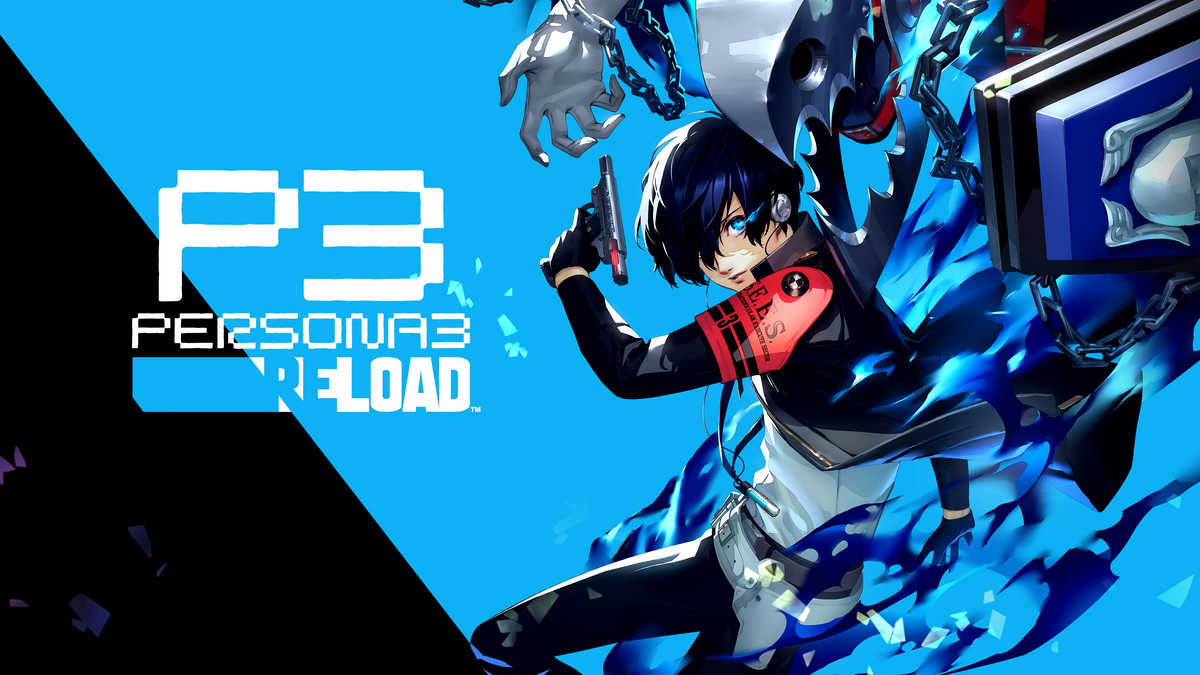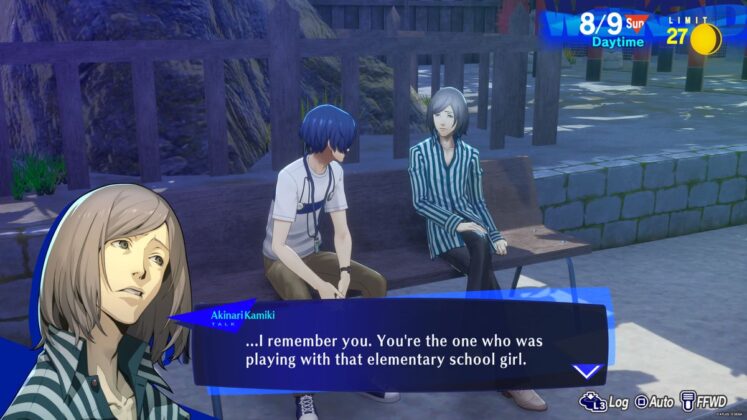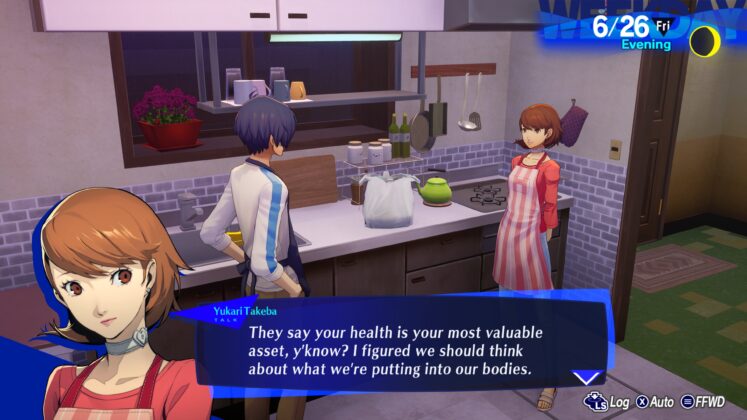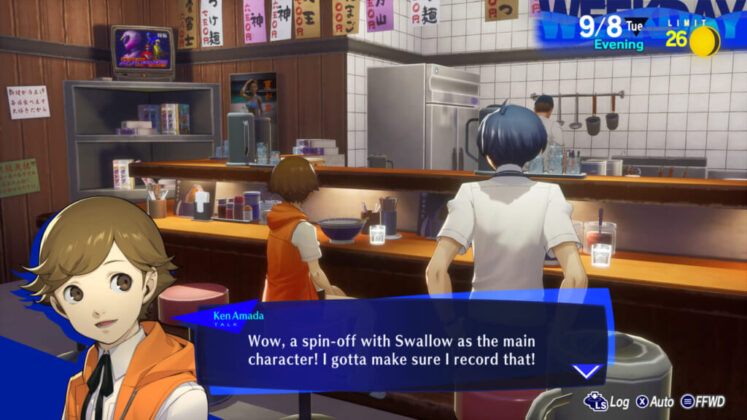Memento Mori, Memento Vivere.
A huge part of Persona games is its story and the Social Link system. While there isn’t much change to the Social Link system itself, Persona 3 Reload brings something entirely new to the series to further enhance the player’s experience: fully voice-acted scenes in all of the Social Link events. At first, I thought this wouldn’t change much of my enjoyment of the story, but later I realized that it added a lot to my immersion during my playthrough. There were a couple of times when the voice acting during the Social Link event nearly brought me to tears (thanks Maiko and Akinari, you guys are the best.). It also improved my enjoyment of some social links that I don’t particularly enjoy. This is such a huge improvement over other games in the series and should be the standard for the series moving forward. It’s so good.
Another thing that was added in Persona 3 Reload is Linked Episodes, which are basically ‘mini-Social Links’ for the male main characters in the game (Junpei, Akihiko, Koromaru, Ken, and Shinjiro) to make up for their lack of Social Link events. While it doesn’t exactly completely replace the Social Link events they had in Persona 3 Portable‘s female protagonist route, it still gives us a chance to know these characters more deeply. I also like that some of them are interlinked with the story progression, acting like closure to the story arcs of these characters, in a way.
Persona 3 Reload also added more activities you can do with members of SEES inside of the dorm, such as reading books together, taking care of plants on the rooftop, cooking, and group studies during exam weeks. These activities give each character a bonus passive trait during combat if you do it enough times with them; for example, Yukari’s healing spells will cost less and Junpei has his critical hit rate increased. The interplay between the systems during your daily life and combat has always been what made Persona special as a series, and Persona 3 Reload brings it even further with this.
There are also more things to do during the day-to-day segments, such as the addition of buying software on the internet cafe that you can use in the dorm’s shared computer to increase your social stats, buying shady software from a guy inside of Club Escapade to raise your stat or even gain new skills that you can use inside of Tartarus, and asking the fortune teller inside Club Escapade to tell your fortune to increase the chance of rare enemies showing up.
One slight annoyance I have with this is that there are just so many activities you can do in the game now. Trying to schedule what activities to do becomes a little bit of a hassle, especially if you aim to do a 100% completion run. While I don’t do that, I barely managed to finish some of the Social Link, Link Episodes, and other events with the SEES members at the end of my playthrough because of this. This is not a bad thing, however, as it shows just how much you can do in this game compared to its original.
The main story of Persona 3, for the most part, is not changed. There are some noticeable changes in the English translation, but it was largely made to make the translation closer to the original Japanese script. Persona 3 Reload follows the same story beat as the original, albeit obviously with much improved visuals than before. It’s a perfect example of “don’t fix what’s not broken” to me, and I agree with the developers’ approach to this remake in this regard.

Ever since I first experienced it a decade or so ago, I have always been in love with Persona 3‘s story. Despite how people talk about the game’s story as the darkest among the Persona games’ stories, at the same time it’s also the series’ most uplifting story to me. The themes of death have always been clear ever since the phrase ‘memento mori‘ shows up in the original game’s opening. But in the same manner that this game talks about death, it also emphasizes really heavily on the beauty of life and why one should forever cherish it. By remembering that you have to die someday, you’re also pushed to cherish life while you have it. Memento mori, memento vivere.
Unfortunately, while the entirety of the original game’s main campaign made it to Persona 3 Reload, Persona 3 FES’ epilogue campaign, ‘The Answer‘, didn’t make it to the remake. The same is also true for Persona 3 Portable‘s female protagonist route, which removes a huge chunk of the Persona 3 experience. This might be a deal breaker for some fans, and I can only hope that they’re both going to be added to the remake as a DLC in the future.
Memories of You.
Persona 3 Reload is a near-perfect remake of the original Persona 3. I’m sure from now on this game is going to be the go-to if someone wants to experience the story of Persona 3. Despite this, I can’t call Persona 3 Reload the ‘definitive’ version of the game. It has weaker animated cutscenes compared to the original. It also lacks ‘The Answer’ and the female protagonist route from the previous games. To me, a true ‘definitive’ version would be a game that incorporates all of the aspects of the Persona 3 experience throughout the years. Unfortunately, this game doesn’t quite deliver on that front.
However, I would be lying if I said the game doesn’t win me over completely; I have loved every second of reliving Persona 3‘s story in this remake, with its beautifully updated visuals and improved battle system. Hearing the songs I used to listen to for hours while playing the game makes me feel like I’m going back in time to play the game of my childhood again, remembering the time in my life when everything was much simpler. That is something irreplaceable to me. I’m sure this game will find its place in the hearts of many, no matter if it’s new fans of the series or returning fans of the game.

The Indonesian Anime Times | Review by Alif Naufal Hakim | The review is based on the PC version of the game, which is provided by SEGA










